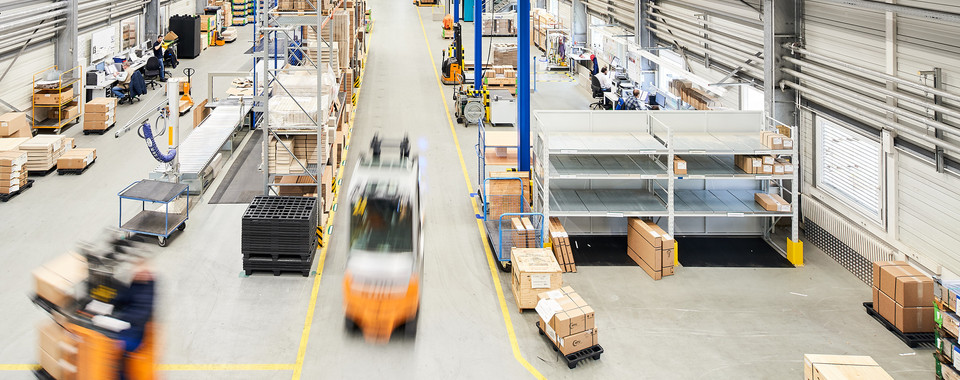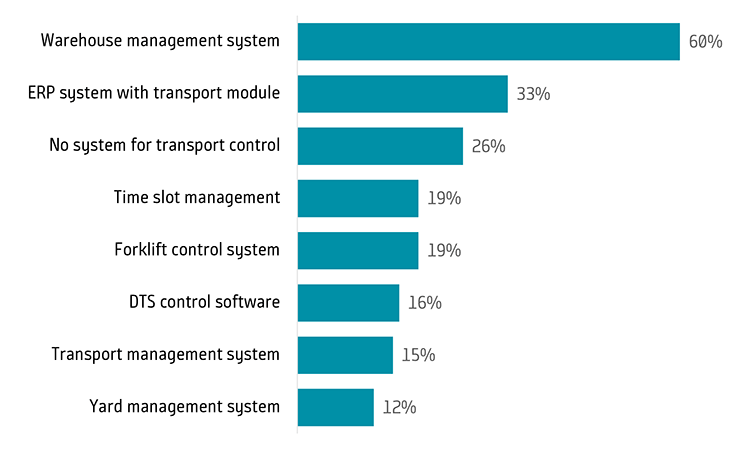
Jan 6, 2025 // Zdravka Ley
Good intentions for intralogistics in 2025
Cloud-based solutions: The future of your internal logistics
May 4, 2021 Matthias Wurst
ShareRESULTS OF THE INFORM SURVEY
The term “Industry 4.0” has already been synonymous with the digitalization of production for ten years and is a decisive driver of economic growth. Production is increasingly responding to individualized customer wishes, which requires a new organization and control of the entire value chain.
This also applies increasingly to internal logistics, which must guarantee a reliable production supply. But how important for the company is internal transport in the overall process? How is logistics IT set up today, and how keen is the awareness of the optimization potential and the willingness to use intelligent control systems? These are the questions addressed by the INFORM study “In-plant Transportation Management 2021: Has the Economic Sector Reached a Turning Point?”
COOPERATION BETWEEN LOGISTICS AND PRODUCTION REQUIRED AT EYE LEVEL
One hundred and twenty-one specialists and managers from German industrial companies took part in the study.
It was found that 76 percent of them consider that internal transports have a high, or even very high, relevance for the company’s overall success.
But not all companies have recognized yet what makes their work in internal logistics more challenging. Production has to react quickly and flexibly to fluctuating demand and increasingly individual customer wishes. It can no longer get by with intralogistics on a transport-by-call basis. The processes of both fields are too interconnected and too important for the overall success of the company.
Communication between logistics and production must work. Three-quarters of the study participants consider the statement “Production is the core of our company; logistics is merely a necessary secondary task” to be inaccurate. A culture of cooperation is needed, as well as suitable tools to increase transparency and control processes. But which transport control systems are used, and can they do justice to the task?
STATUS QUO: TRANSPORT MANAGEMENT WITHOUT OPTIMIZATION

Figure 1 – Which systems for transport control do you use? (n=121; multiple answers allowed)
More than two-thirds (74%) of the companies surveyed use at least one internal transport management system. However, the majority of these are not optimization systems.
In general, only optimization systems can enable real-time control and planning of transports against limited capacities. Likewise, ERP and merchandise management systems lack optimization logics and simultaneous consideration of the entire transport order network. Systems with intelligent optimization algorithms can manage ad-hoc activities, such as which forklifts are available or determining which trains or AGVs should carry out which order next so that the entire order network is served optimally.
Decreasing technical integration hurdles make it increasingly easy to exploit the full optimization potential of specialized systems compared to a single-system approach.
CONCLUSION: THERE IS A NEED TO CATCH UP
Customer requirements increase the demands on planning and responsiveness. Both can be achieved by real-time control in intralogistics. The relevance of specialized logistics systems for the performance of internal transport is recognized by 83 percent of the companies surveyed. After all, logistics should not only put out fires, but also contribute stable processes to assure on-time delivery and short delivery times in production.
Proven, scalable, and – in particular – cloud-based specialized systems will be a key competitive factor for the efficiency and resilience of intralogistics in the near future.
About our Expert